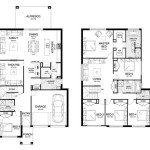The Average Size of a One-Bedroom Apartment: A Comprehensive Overview
Understanding the average size of a one-bedroom apartment is a crucial first step for renters, landlords, and real estate professionals. The square footage of a one-bedroom apartment significantly impacts its livability, rental price, and overall appeal. However, pinpointing a single, universally applicable "average" is challenging due to numerous influencing factors, including location, building type, and market conditions.
This article aims to provide a comprehensive overview of the average size of a one-bedroom apartment, exploring the factors that contribute to variations in size and offering insights into how these dimensions affect the rental market. It will delve into geographic differences, construction trends, and the trade-offs between space and affordability.
Geographic Location: A Primary Driver of Size Variation
One of the most significant determinants of apartment size is geographic location. Major metropolitan areas, characterized by high population density and expensive real estate, typically feature smaller average apartment sizes compared to suburban or rural areas. In cities like New York City, San Francisco, or Tokyo, a premium is placed on location and accessibility, often resulting in smaller living spaces to accommodate a greater number of residents.
Conversely, in regions with lower population density and more available land, one-bedroom apartments tend to be larger. The cost of land is a primary factor; when land prices are lower, developers can afford to build larger units without significantly impacting the overall cost of the building. Furthermore, in suburban and rural areas, a greater emphasis is often placed on providing residents with more spacious living environments, reflecting a different set of lifestyle priorities.
For example, the average one-bedroom apartment in Manhattan might be significantly smaller than a similar unit in a smaller city in the Midwest. This difference is driven by the intense demand for housing in Manhattan and the correspondingly high real estate values. In contrast, a one-bedroom apartment in a less densely populated area might offer significantly more square footage for a comparable rental price.
It is also important to consider regional variations within the same country. Coastal cities often have higher housing costs and smaller average apartment sizes compared to inland cities. This disparity reflects the desirability of coastal locations and the limited availability of land in these areas.
Construction Era and Building Type: Influencing Factors
The age and type of building also play a significant role in determining the size of a one-bedroom apartment. Older buildings, particularly those constructed before the mid-20th century, often feature larger units compared to more modern developments. This is due to changing construction practices and evolving design preferences over time.
Historically, apartments were often designed with more generous living spaces, reflecting a different set of priorities in terms of lifestyle and comfort. Older buildings may also have thicker walls and more substantial structural elements, which can contribute to a larger overall footprint. Furthermore, older buildings may have been constructed during a time when land was less expensive, allowing for larger unit sizes.
In contrast, modern apartment buildings tend to prioritize efficiency and maximizing the number of units within a given space. Developers often focus on creating smaller, more streamlined apartments to increase profitability and cater to a growing demand for affordable housing options. This trend is particularly evident in urban areas, where land costs are high and the demand for rental units is strong.
Building type also influences apartment size. High-rise apartment buildings often have smaller units compared to low-rise buildings or garden-style apartments. This is due to the need to maximize space utilization in high-density developments. Garden-style apartments, which are typically found in suburban areas, often offer more spacious units with outdoor amenities such as balconies or patios.
Condominium buildings, where units are individually owned, may also have different average sizes compared to rental apartment buildings. Condominiums are often designed with more luxurious features and larger living spaces, reflecting the higher investment associated with ownership. However, this is not always the case, and the size of a condominium unit can vary depending on the location and the target market.
Impact of Market Conditions and Affordability
Economic conditions and market trends exert a significant influence on the average size of one-bedroom apartments. During periods of economic growth and strong demand for housing, developers may be incentivized to build smaller units to maximize profitability. Conversely, during economic downturns or periods of oversupply, developers may offer larger units as a way to attract renters.
Affordability is a major driver of apartment size. As housing costs continue to rise in many urban areas, renters are increasingly forced to accept smaller living spaces in order to stay within their budget. This trend has led to the proliferation of micro-apartments and other compact living solutions, which offer a lower cost alternative to traditional one-bedroom apartments.
The relationship between apartment size and rental price is complex and multifaceted. While larger apartments typically command higher rental rates, the price per square foot may be lower compared to smaller units. This is because renters are often willing to pay a premium for smaller, more centrally located apartments that offer convenient access to amenities and transportation.
Furthermore, the amenities offered within an apartment building can also influence the rental price and the perceived value of a unit. Buildings with modern amenities such as fitness centers, swimming pools, and co-working spaces may be able to command higher rental rates, even if the apartments themselves are relatively small.
The demand for one-bedroom apartments is also influenced by demographic trends and lifestyle preferences. Single individuals and young professionals often prefer one-bedroom apartments, as they offer a balance between affordability and privacy. However, the demand for one-bedroom apartments can also be affected by factors such as the availability of alternative housing options and the overall economic climate.
Ultimately, the average size of a one-bedroom apartment is a dynamic and evolving metric that is influenced by a complex interplay of factors. Geographic location, building type, construction era, market conditions, and affordability all contribute to variations in apartment size. Understanding these factors is essential for renters, landlords, and real estate professionals seeking to navigate the ever-changing rental market.
While it is difficult to pinpoint an exact average that applies universally, a generally accepted range for a one-bedroom apartment falls between 600 and 900 square feet. However, as this article has explored, this range can vary significantly depending on the specific circumstances of the apartment and its location. Further research into local market conditions is always recommended when evaluating rental options.

Average Apartment Size In The Us Seattle Has Smallest Rentals
Apartment Layouts Midland Mi Official Website

Average Apartment Size In The Us Atlanta Has Largest Homes

1 Bedroom Apartment Plan Examples

Average Apartment Size In The Us Seattle Has Smallest Rentals

Shoeboxes And Studios How Small Can Cbd Apartments Get

What Is The Average Size Of Apartments In Usa

Kirkland Annex Floorplans The Union Manors

Average Apartment Size In The Us Seattle Has Smallest Rentals

1 Bedroom Apartment Plan Examples








